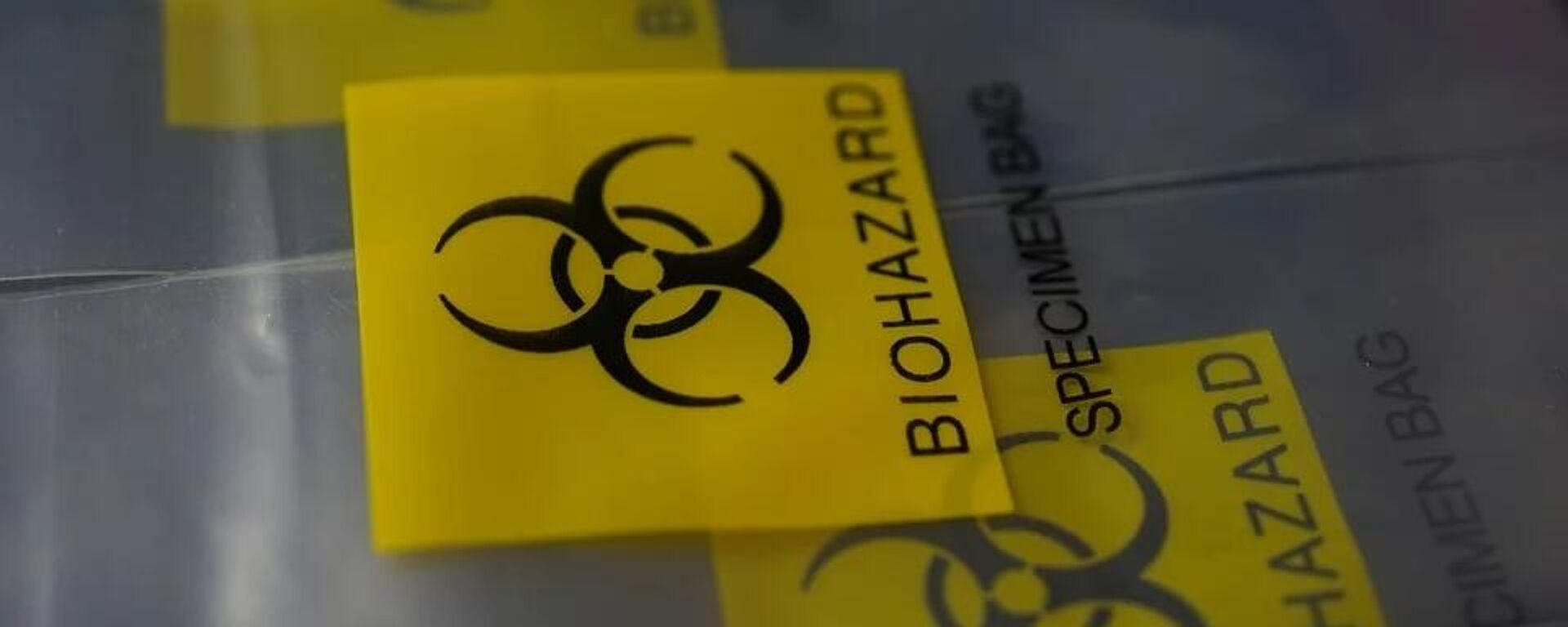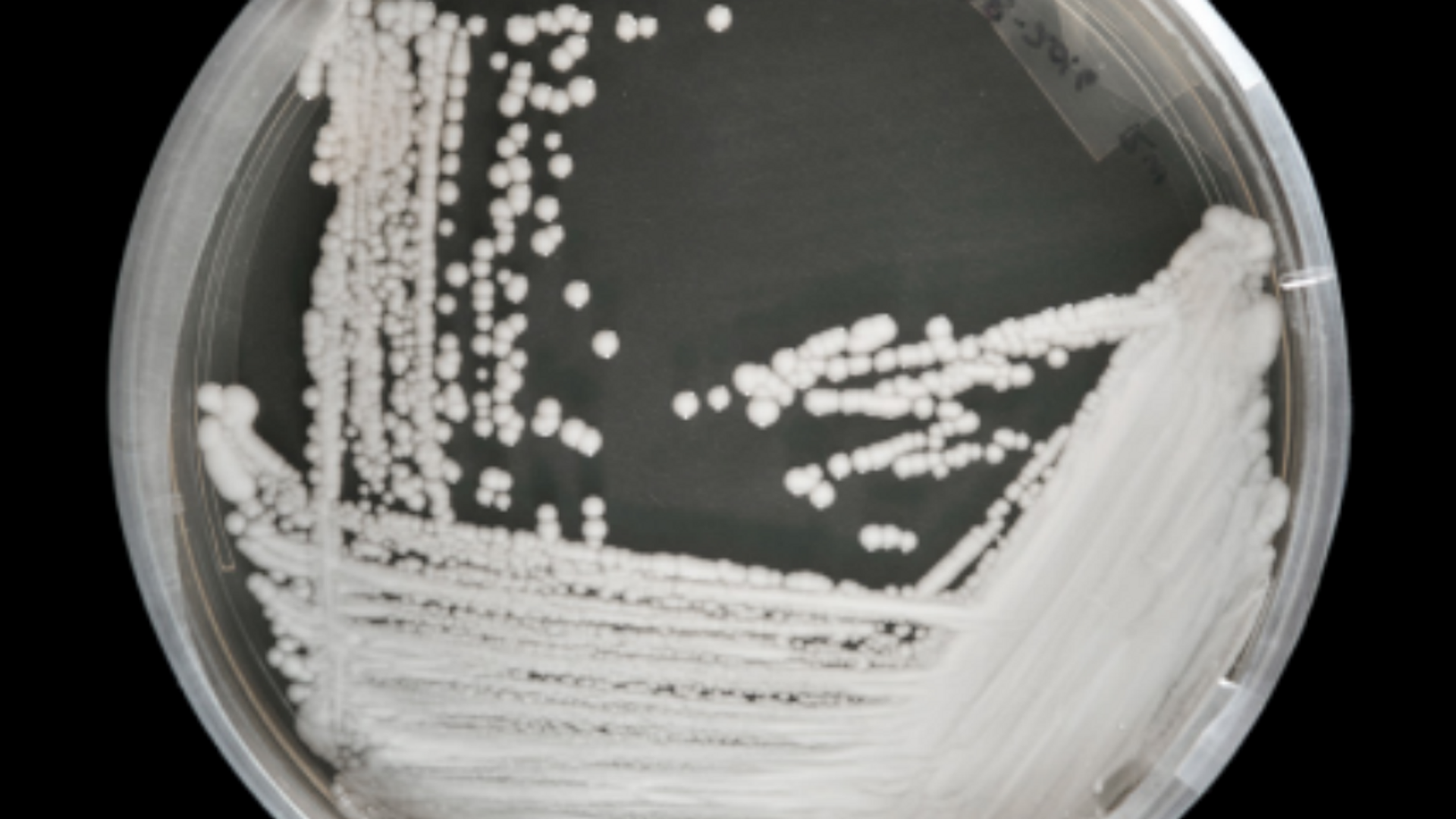Biolabs at Work? 'Antimicrobial Resistance' Sees Alarming Spike in Ukraine - CDC
12:50 GMT 08.12.2023 (Updated: 14:00 GMT 08.12.2023)
Subscribe
Russia’s Radiological, Chemical and Biological Defense Troops have spent nearly two years shedding light on the extent of US military-biological activities in Ukraine, from the deliberate infection of Ukrainian servicemen with deadly viruses to gauge response to work on deadly new pathogens designed specifically to target certain genotypes.
Resistance to antimicrobial medicines which prevent and treat infectious diseases has experienced an explosive rise in Ukraine.
That’s according to a new report by the US Centers for Disease Control released Friday, which indicated that “in Ukraine, the confluence of high prewar rates of antimicrobial resistance, an increase in the prevalence of traumatic wounds, and the war-related strain on health care facilities is leading to increased detection of multidrug-resistant organisms with spread into Europe.”
The report, made possible through collaboration between the CDC, the Center for Public Health of Ukraine (UPHC), and other local health authorities and “international partners,” including the World Health Organization and the US State Department, used data collected in hospitals in the western and central Ukrainian regions of Ternopol, Khmelnitskiy, and Vinnitsa.
The study found that in the period between November and December 2022, some 14 percent (50 out of 353) sampled patients suffered from health care-associated infections, with 30 of the 50 infected with a carbapenem-resistant organism – a type of bacteria that can produce chemicals that destroy antibiotics.
Among 19 patients infected with kebsiella, a bacteria known to cause respiratory, urinary and wound infections, a whopping 100 percent showed resistance to antibiotic agents. Meanwhile, among 20 sampled patients with klebsiella pneumoniae (a genus of kebsiella typically associated with pneumonia among patients suffering from diabetes and alcohol abuse), 100 percent once again showed resistance to cephalosporin, a third-generation beta-lactam antimicrobial.
“These rates are substantially higher than those reported from a 2016-2017 European Union-wide point prevalence survey, which included more than 300,000 acute care hospital patients and 100,000 long-term care facility residents,” the CDC said, noting that “among these respondents, the study found a health care-associated infection rate of 5.5 percent.”
The CDC blamed “inadequacies in surveillance of health care-associated infections, implementation of infection prevention and control measures such as recommended hand hygiene, and monitoring, evaluation and feedback to the hospital staff members” for the alarming spike in antibiotic resistance in Ukraine.
“The laboratory assessments identified multiple challenges, especially inadequate quantities of automated microbiology equipment, and suboptimal laboratory quality and information management systems, biosafety practices, and staffing, as well as inconsistent availability of essential antibiotic susceptibility testing consumables,” the report said.
The CDC called for “urgent capacity building…to prevent, detect, and respond to antimicrobial resistance…to save lives within Ukraine and limit international spread,” and pointed to efforts by Ukraine’s health authorities to improve laboratory-based detection and surveillance, “upgrading [of] laboratory equipment and workflows, increasing availability and use of hand-hygiene disinfectants, and providing technical training for staff members.”
The UPHC, meanwhile, has reportedly “issued clinical guidance on indications for bacteriology testing, including to military hospitals,” while its partners have worked “to provide additional laboratory supplies to meet the increased wartime demands, to capacitate laboratories to test for bacterial susceptibility to newer-generation antibiotics, and to improve reliable hospital access to these antibiotics.”

28 November 2023, 14:54 GMT
What Did the CDC Report Leave Out?
Per the dozens of presentations by Russian Radiological, Chemical, and Biological Defense Troops chief Igor Kirillov on American military-biological activities in Ukraine, the CDC is one of a host of US government agencies, including the US Department of Agriculture, the US Agency for International Development, plus Ivy League universities and Western pharmaceutical giants, involved in shady, risky, and potentially illegal research at biological facilities across Ukraine.
The RCBD Troops’ presentations, accompanied by hundreds of documents seized and publicized over the course of Russia’s military operation in Ukraine, have revealed the presence of at least 46 biolabs in the Eastern European country engaged in research into an array of deadly pathogens.
To date, the RCBD Troops have revealed US military biological activities in Ukraine including:
Research into diseases designed to target flora, fauna and agriculture as a form of economic warfare against US adversaries.
The deliberate infection of Ukrainian servicemen with deadly pathogens to measure response and possible experimental treatments.
The deliberate infection of residents of Ukraine and Donbass with viruses, including a multi-drug-resistant strain of tuberculosis, and experiments involving Ukrainian nationals at a psychiatric hospital in Kharkov region.
The collection of blood serum samples from across Ukraine and its shipment abroad (to Germany and the US), and alleged work to create viruses which can target the Slavic genotype.
The Russian military has sounded the alarm about Ukraine’s growing antiviral resistance problem specifically on multiple occasions.
“A lack of therapeutic effect was revealed during the administration of antibacterial drugs. High concentrations of antibiotics, including sulfonamides and fluoroquinolones, were detected in the blood of Ukrainian military personnel,” RCBD Troops chief Kirillov said in a briefing in 2022.
“This fact may indicate the prophylactic use of antibiotics and the personnel’s preparation to perform tasks in conditions of biological infection,” he said. “For example, preparation for the causative agent of cholera, which indirectly confirms the Russian Defense Ministry’s information about plans to use biological agents by Ukrainian special forces.”
Now, as the problem of drug-resistant infections in Ukraine appears to be reaching critical mass and threatening America’s European allies, the CDC’s report could very well constitute an attempt to cover up its activities and blame Ukraine’s underfunded and “war-strained” health care system for a potentially explosive regional health crisis to come.



